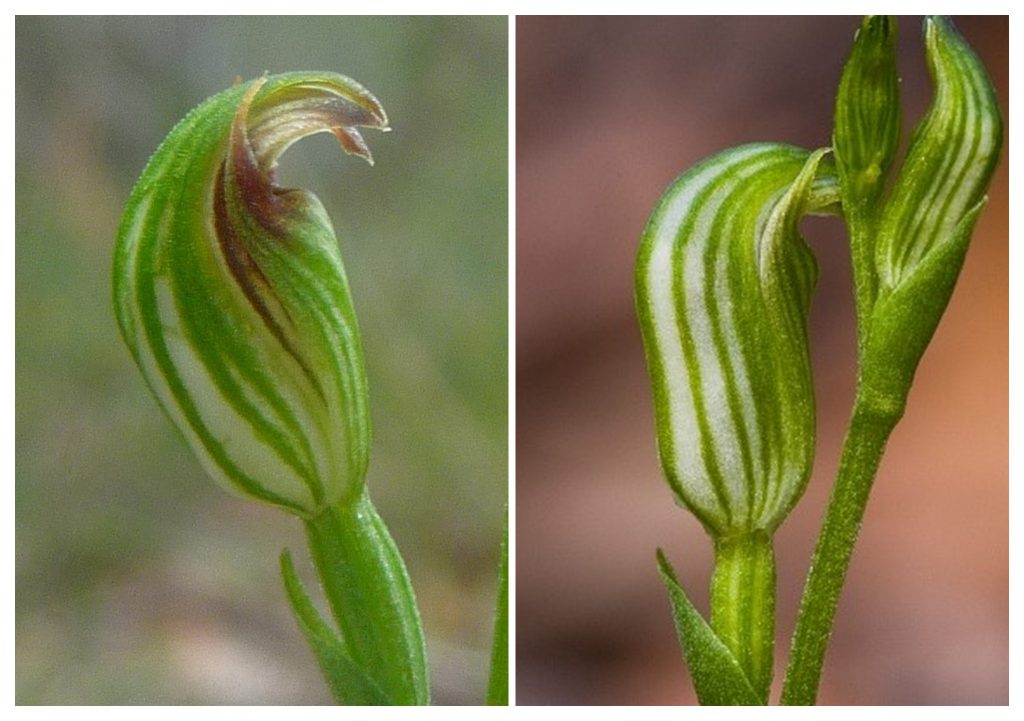Small but not insignificant – the Tiny Greenhood is now in flower
The “Tiny Greenhood” is its common name, but common it is not! When this species was first discovered in the south-east of South Australia, it was misidentified as Pterostylis parviflora, and was recorded under a variety of incorrect names. In 2017 botanist David L. Jones formally gave the Tiny Greenhood orchid its new identity – Pterostylis corpulenta. The Tiny Greenhood has dumpy little flowers, hence the Latin name meaning fat or stout, or heavily built body.
Pterostylis corpulenta is an autumn-flowering greenhood with green and whitish striped flowers, and red-brown tips. The plant can be up to 30 cm tall, with one to twelve flowers which all face the stem. It has a musty odour. Interestingly it has a ground hugging rosette adjacent to the flowering plant, on a side shoot underground. Non flowering plants have a much smaller rosette. Pterosytlis parviflora has green and white flowers (no brown), has not recently been seen in South Australia, and grows in a different habitat.

Flowers of (left) P.corpulenta (photo: Sheryl Holliday), and (right) P.parviflora (photo:www.piko.com.au).
Pterostylis corpulenta are out in flower now in forest reserves north-west of Mt Gambier. Please stick to the walking tracks and if you are lucky enough to find and photograph one, please let us know! All native orchids are protected in the reserves, and they rely on a complex network of soil fungi and connections for their survival. In eighteen years of visiting Telfords Scrub Conservation Park, I have found only one Tiny Greenhood plant there, so there’s a challenge for someone!

Known distribution of Pterostylis corpulenta. The Flora SA Census lists this species as vulnerable (source: Atlas of Living Australia).
Even if you don’t see a Tiny Greenhood, the reserves are beautiful places for a leisurely stroll in the bush and you keep an eye out for the Fringed Hare Orchid (Leporella fimbriata), and the Parsons Bands (Eriochilus cucullatus). I would love to see your photos, so send them in.
Happy orchid hunting!!

